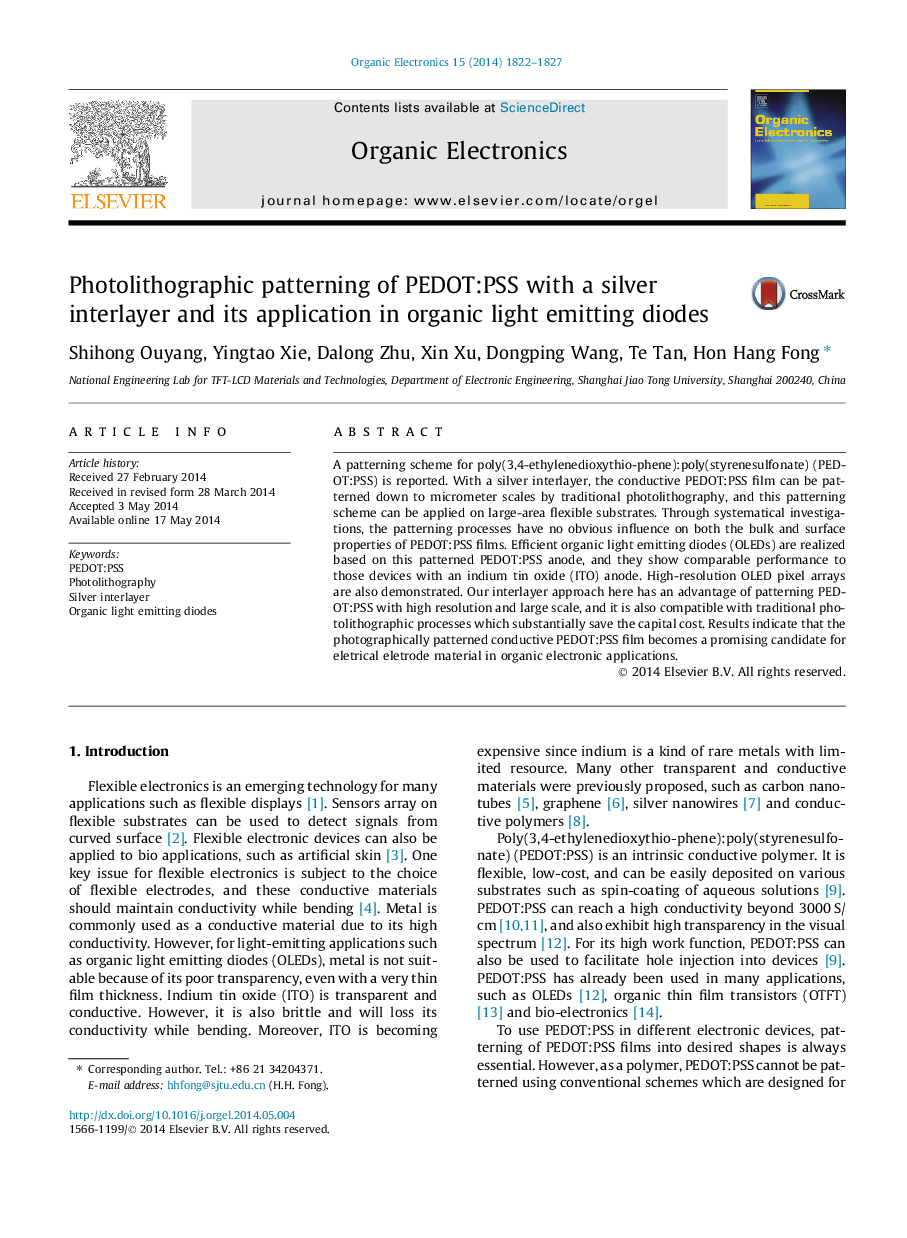| Article ID | Journal | Published Year | Pages | File Type |
|---|---|---|---|---|
| 1263829 | Organic Electronics | 2014 | 6 Pages |
•Facile patterning approach for PEDOT:PSS was introduced.•With silver interlayer, traditional photolithography could be used.•No obvious influence towards PEDOT:PSS was observed after patterning.•This method can be applied to flexible and large-area substrates.•High resolution pixel OLEDs were achieved.
A patterning scheme for poly(3,4-ethylenedioxythio-phene):poly(styrenesulfonate) (PEDOT:PSS) is reported. With a silver interlayer, the conductive PEDOT:PSS film can be patterned down to micrometer scales by traditional photolithography, and this patterning scheme can be applied on large-area flexible substrates. Through systematical investigations, the patterning processes have no obvious influence on both the bulk and surface properties of PEDOT:PSS films. Efficient organic light emitting diodes (OLEDs) are realized based on this patterned PEDOT:PSS anode, and they show comparable performance to those devices with an indium tin oxide (ITO) anode. High-resolution OLED pixel arrays are also demonstrated. Our interlayer approach here has an advantage of patterning PEDOT:PSS with high resolution and large scale, and it is also compatible with traditional photolithographic processes which substantially save the capital cost. Results indicate that the photographically patterned conductive PEDOT:PSS film becomes a promising candidate for eletrical eletrode material in organic electronic applications.
Graphical abstractFigure optionsDownload full-size imageDownload as PowerPoint slide
